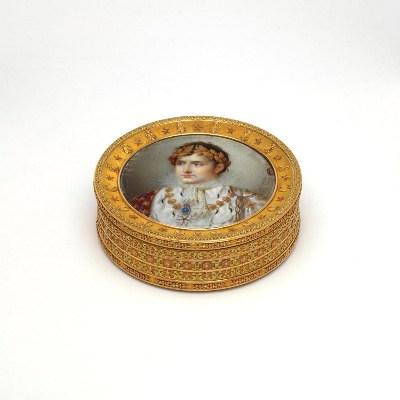Decorative arts are often designed with a few secrets and surprises—hidden drawers, colorful interiors and ornate decorations in unexpected places. As displayed in a gallery, it’s not always possible to show everything. Today and tomorrow on Unframed, for your eyes only, two of our curators have unlocked, turned over, and opened up four works of art to reveal to you the wonders that are normally hidden from view. First up, Elizabeth Williams gives a look at two objects on view in our European galleries.
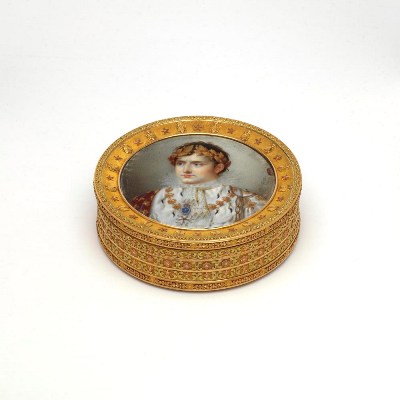
Moulinié, Bautte et Moynier (gold box) and Jean-Baptiste Isabey (portrait miniature), Snuffbox with Napoleon Bonaparte I, c. 1812, long-term loan from The Rosalinde and Arthur Gilbert Collection on loan to the Victoria and Albert Museum, London
This miniature portrait gold box of Napoleon Bonaparte I is a stunning combination of an exquisitely rendered portrait by French painter Jean-Baptiste Isabey and a tour de force of goldsmithing by the Swiss firm Moulinié, Bautte et Moynier, which was based in Geneva. A pupil of Jacques-Louis David, Isabey became one of the best-known French portraitists with a long list of commissions from the successive rulers of France, including Marie Antoinette and the Napoleonic court. Here Isabey has depicted Napoleon as an official icon, shown in the coronation regalia he wore when he crowned himself Emperor Napoleon I. Surrounded with a border of alternating stars and bees, a symbol of Napoleon’s reign, the emperor wears a gold diadem, and the five-armed cross of the Order of the Legion of Honor lays against the ermine of his coronation robes. The blue pendant with an “N” that Napoleon wears is replicated with the golden “N” set on a ground of deep blue enamel on the underside of the box which is encircled by intricately wrought radiating trophées d’armes (depictions of the enemy’s arms taken by the victor), composed of three different tones of gold: white, yellow and rose.
But why spend time and effort to so elaborately decorate the bottom of the box?
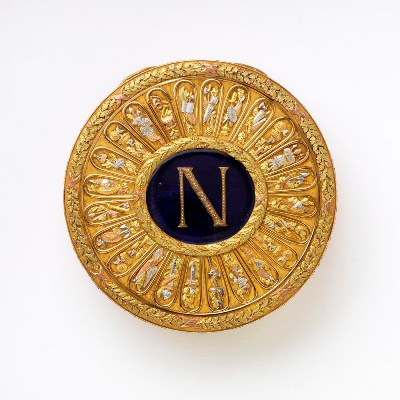
Bottom of snuffbox
This gold box was fashioned for the functional purpose of holding snuff, or powdered tobacco. Initially overshadowed by the practice of smoking tobacco during the sixteenth and seventeenth centuries, the taking of snuff developed into an elaborate social custom during the eighteenth century. By taking snuff from a gold box, wealthy aristocrats could show their taste, status, and wealth in a single gesture. All sides of these magnificent status symbols would be on view as the owner displayed the treasure just taken from his pocket and opened the lid to take a pinch of snuff. In addition to serving a functional and social purpose, gold boxes were also considered a sort of fashion accessory, and were often selected to complement the owner’s couture, or to mirror the attributes of the season.
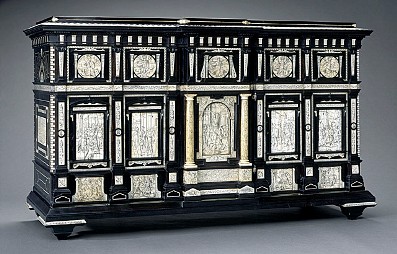
Attributed to Jacobus Fiamengo, Cabinet, c. 1600, gift of the 2000 Collectors Committee
Made from rare and exotic materials such as ivory and ebony, this cabinet, with its many drawers and compartments, was made to house valuable personal possessions. Such luxurious cabinets were prominently displayed to show the taste, knowledge, and wealth of their owners. Whereas a number of the drawers can easily be spotted by their keyholes, this cabinet possesses many hidden drawers and compartments that only those familiar with its design could find.
Although normally under lock and key, we have temporarily opened some of the secret spaces for you to see. The cabinet’s center panel opens to reveal four small drawers.
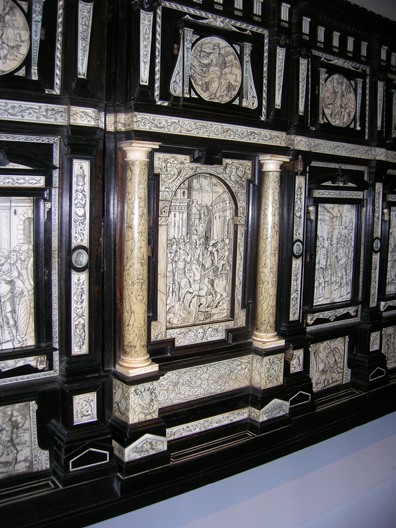
Front of the center panel
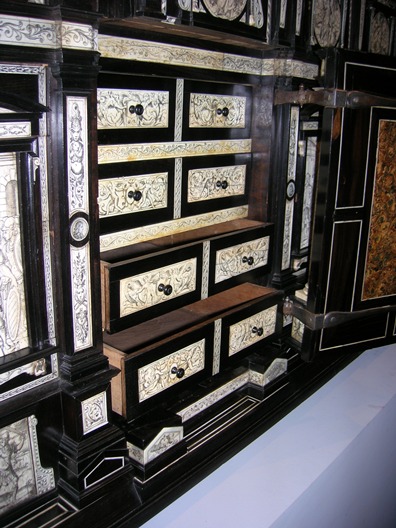
Drawers in center panel, closed or open
This cabinet’s distinctly architectural form, with its overhanging cornice, medallions, and portal flanked with Ionic columns, is characteristic of classical Renaissance architecture. Depicting themes of ancient Rome, the intricate decoration of the ivory panels is achieved by the sgraffito technique, in which incised lines are filled with black pigment. The vertical members between the drawers may seem to be merely part of the cabinet’s architectural structure. However, they too open to reveal a slender hiding place for the most important of documents.
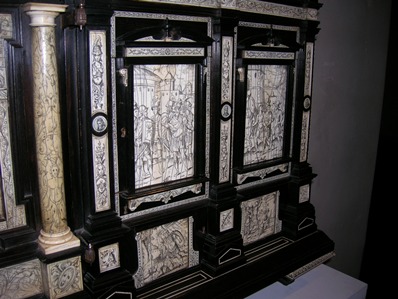
Drawers and vertical slide-outs closed
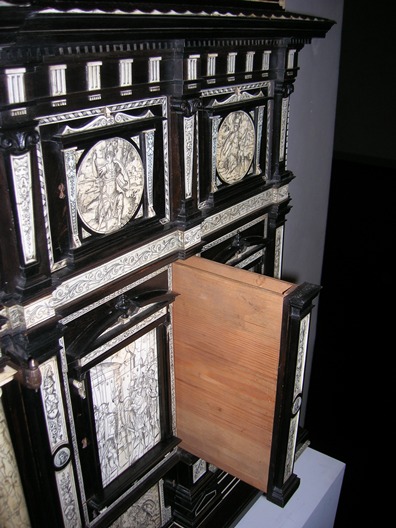
Vertical slide-outs pulled out
Elizabeth Williams, the Marilyn B. and Calvin B. Gross Curator of Decorative Arts



